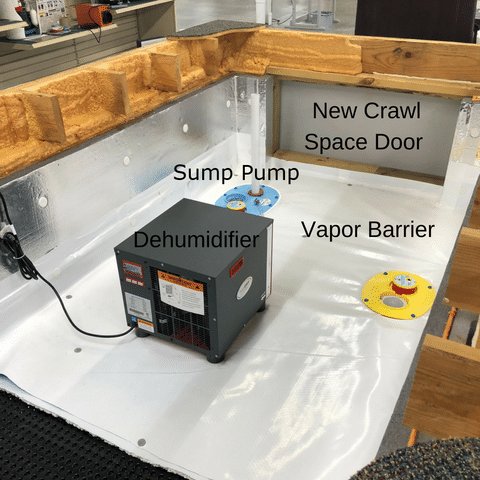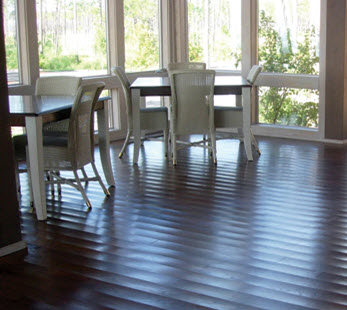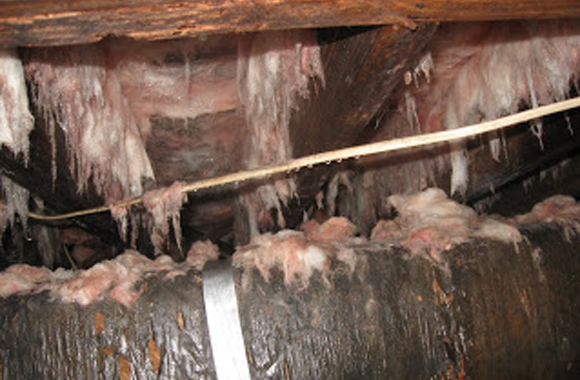If you get three general contractors together and the discussion topic turns moisture control, you’ll probably hear at least five opinions. There seems to be many different and often conflicting opinions about what is the best tack to take to mitigate moisture in a home. The concept of crawlspace encapsulation (sealing) has been around for a while now. We are Carolina Energy Conservation (CEC) and we are an energy performance contractor serving most of eastern South Carolina and much of south-eastern North Carolina. Our company pioneered energy performance home improvements in eastern South Carolina and has been making homes safer, healthier, and more economical places to live for nearly a decade. Here is our take on home moisture control.
There has been much research on crawlspace encapsulation during the past decade. The US Environmental Protection Agency, the US Department of Energy, the ZEBRAlliance at Oak Ridge National Laboratories, and a non-profit research organization called Advanced Energy have all done excellent and groundbreaking research in the area of crawlspace encapsulation. Their research findings were instrumental in the last revision of the International Building Code. They all agree in a few, very important areas.
We are Building Performance Institute certified analysts. That means when considering your home, we think of it as a single system. Your HVAC system, insulation, windows, attic, living space, and crawl space all work together. These building components need to be optimized and balanced to achieve maximum comfort, performance and energy efficiency. Your crawl space is an important part of this system.
Your house is like a giant chimney. By natural convection, air is drawn in through crawlspace vents and air leaks. Because warm air rises, the outside air is drawn through the living space (along with mold spores, odors, and moisture) and exhausted through the attic. In the summer, your crawlspace is naturally cooler than the ambient outside temperature. So when the warm, humid outside air reaches the cooler crawlspace surface areas, the moisture condenses on framing, plumbing, wiring, insulation and especially HVAC ductwork and “sweats”, just like an iced tea glass sweats on your kitchen table in the summer. In the southeast it is not unheard of for us to see crawlspace humidity approaching 100% and see it actually rain inside a crawlspace.
The moisture in your crawlspace creates an ideal environment for wood destroying organisms, mold, and mildew. It can saturate and destroy the effectiveness of your insulation and promote wood rot. And because of the chimney effect, the humid crawlspace air, full of mold and mildew spores, eventually finds its way into your living space creating an unhealthy environment and causing your air conditioning to work overtime to dehumidify the air. Just a vapor barrier might help a bit, but most of the moisture is coming from outside through crawl space vents, not from your dirt, crawlspace floor.
So, the alternative to a vented crawlspace is an encapsulated (sealed) crawlspace. Crawlspace encapsulation involves stopping running and standing water at the source, sealing all outside vents, installing a high-performance vapor retarder on all exposed wall and floor surfaces, insulating the walls, and conditioning the air.
The prevailing research claims that by insulating the walls, it is unnecessary to insulate the floor. However, if CEC finds existing floor insulation that is in good condition, we will leave it in place. We generally recommend spray foam or a rigid foam board insulation that is fire-retardant, low VOC, and offers an R-10 value or greater on the walls. Foam board can be used for sealing existing crawlspace vents from the inside, too preserving the visual integrity of the home’s exterior.
The building codes in most areas require the air in an encapsulated crawlspace to be conditioned. That usually means adding a dehumidifier. A relative humidity target of 60% or lower is a good place to start. A remote humidistat is inexpensive and an invaluable tool for determining the correct amount of dehumidification.
When comparing high performance vapor barriers, look at puncture and tear resistance. Other than being absolutely water tight, a high-performance vapor barrier should also be flexible, fire resistant, low VOC, and lightweight. There is a world of difference between the 6-mil vapor barrier material sold in most hardware stores and a high-performance specialty product we install. Most reputable installers will provide samples before starting work.
Carolina Energy Conservation installs a 20-mil, seven ply, polyester string reinforced, high density and low density polyethylene vapor barrier. Our vapor barrier is a true vapor barrier and not just a vapor retarder. It is flexible yet strong, offering excellent tear and puncture resistance.
All of the experts agree that when you seal a crawlspace or add a high-performance vapor barrier, the vapor barrier should be firmly attached and sealed to the crawlspace foundation wall. Carolina Energy Conservation uses a foundation vapor barrier that attaches to the foundation wall in a single, easy step using only low VOC materials. Our encapsulation system uses only the safest materials and the safest installation techniques.
In addition to dramatically increasing indoor air quality, reducing odors, and protecting the structure of your home, several research studies from Advanced Energy indicate that crawlspace encapsulation can actually lower energy usage. These studies were done in several parts of the country with varying climates. See a link to their study results.
Carolina Energy Conservation is a full-service crawlspace encapsulation installation contractor and uses only the highest quality encapsulation materials available. With offices in Myrtle Beach, SC, CEC services most of eastern South Carolina and parts of southeastern North Carolina. Visit our website and see for yourself what makes Carolina Energy Conservation the first choice for first rate energy home improvements including crawl space moisture control. Give us a call at (843) 342-9555 or visit our website at www.ceccrawlspacerepair.com



